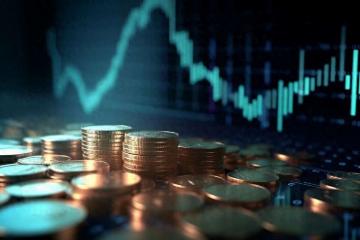Rotation of Capital from US Stocks to European Stocks
Advertisements
After experiencing some of the most challenging times in 2024 compared to the American market, European stocks have unexpectedly caught investors' eye this JanuaryTrading surged on the continent as investors began to show a renewed interest in equities, reversing the trend that marked previous months.
In a significant turn of events, the European stock benchmark, the STOXX 600 index, surpassed its record high achieved on September 27, 2024, on January 22, 2024. By the time of reporting, the index had risen by 0.73%, buoyed largely by gains in the healthcare and industrial sectors, with Novo Nordisk making the most considerable contribution to this upward momentum.
A report released by Bank of America on January 21 highlighted a troubling lack of foundation for concerns regarding the newly elected U.SPresident's tariffs and the turmoil surrounding bond marketsThis led to a risk-on asset allocation among fund managers
Advertisements
Notably, the rotating trend of capital flowing from U.Sstocks to European equities saw the largest increase in twenty-five years, signaling a shift in investor sentiment.
Interestingly, fears surrounding the potential tariffs imposed by the U.SPresident did not significantly dampen investor confidenceThe market began to shift its viewpoint, suggesting that perhaps the anticipated tariffs were not as detrimental as initially feared.
According to the latest fund manager survey from Bank of America, January registered the second largest increase in European stock allocation in the past quarter of a centuryThe rotation of funds saw allocations to European stocks soar from a mere 22% underweight to a surprising 1% overweight, while the positioning in U.Sstocks dropped dramatically from a staggering 36% overweight in December to merely 19% overweight.
“Europe currently represents a solid investment opportunity, especially as we anticipate some pivotal triggering factors,” stated Alberto Tocchio, Portfolio Manager at Kairos Partners
Advertisements
He added, “While tariffs continue to be a short-term focal point, the sentiment is that they might not prove to be as catastrophic as once thought.”
However, as noted by Thorsten Winkelmann, an analyst at AllianceBernstein, not all companies across Europe are likely to face equal repercussions from the tariff pressuresEnterprises characterized by robust pricing power, localized operations, optimized supply chains, and dominance in niche markets are expected to withstand potential adverse impacts more effectively.
Some European firms that have established a strong presence in the U.Smight even find themselves benefiting from the tariffs, particularly in manufacturingFor instance, companies like Diploma and Beijer Ref have localized operations and a robust supply chain in the U.S., thus positioning them well against any potential fallout from tariff impositions.
Similarly, the Swedish multinational corporation Atlas Copco, which supplies tools and services to sectors such as manufacturing, mining, and construction, is markedly resistant due to its diverse revenue sources and global business network, thus safeguarding it from region-specific economic challenges.
While tariffs do present a risk of rising costs, these expenses can typically be transferred to customers
Advertisements
Therefore, not every European company might face an immediate drop in demand, as the extent of the impact heavily relies on several factors, including the company’s competitive standing and its pricing capabilities.
As the European stock market surged, technological and healthcare sectors emerged as key drivers of this upward momentumThe healthcare sub-sector increased by 1% during this period, led notably by a 2.3% rise in Novo Nordisk shares, which became a cornerstone of the healthcare sector's rallyNovo Nordisk’s sustained investment in research and development of innovative drugs, as well as market expansion efforts, have maintained its leadership within the global healthcare landscape, where its stock price increase is a testament to how well the market perceives its growth potential.
Simultaneously, Adidas experienced a spectacular share price surge of 6.3% following the release of preliminary fourth-quarter results that exceeded expectations, underlining strong holiday sales and profitability
- Fostering New Momentum in Biomanufacturing
- AI Stocks Surge: Are They Overvalued?
- Unlocking the Value Transformation of Ecological Products
- Enhancing Commodity Price Risk Management
- ETF Targets Zero-Day Options Investment
Adidas's strategic market positioning, innovative product lines, and effective marketing tactics have allowed it to secure a significant foothold within the global sports apparel market, and its stellar performance has not only bolstered its own valuation but also invigorated the entire European stock market.
Reflecting on the sentiment among investors regarding U.Sequities, AJ Bell’s Investment Director, Russ Mould, remarked that the market has largely braced itself for bad news, primarily due to the absence of a concrete tariff planThis sentiment has encouraged a shift in focus towards the European market.
Amidst this resilient performance of European stocks, many investors have begun acquiring shares in the region, especially as valuations in the U.Smarkets continue to rise, leading them to seek more attractive investment alternativesAs interest grows in the European stock sphere, discussions surrounding the European Central Bank’s monetary policy have also come to the forefront

Leave a Reply
Your email address will not be published. Required fields are marked *